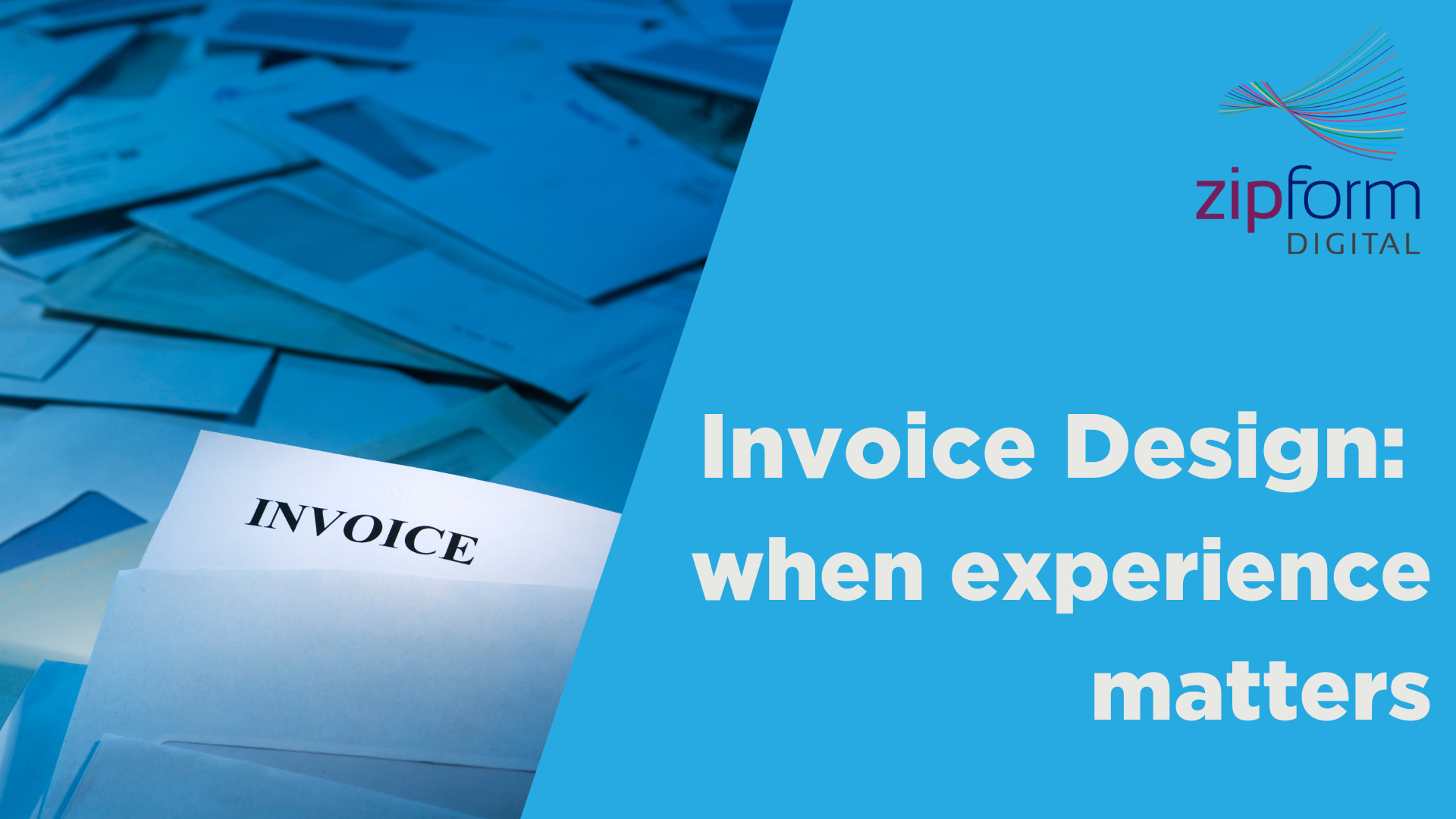Designing invoices: best practice
An invoice can be a critical piece in the customer experience journey, especially when it comes to billing for services.
In this article, we explain why best practice bill design is critical to not only keep revenue flowing and reduce bad debts, but creating a positive customer experience.
An invoice is a critical element of the customer experience journey. It isn’t just about ink on paper – clear, well designed bills are critical to keeping revenue flowing, lowering collection costs, bad debts and ultimately, creating a positive customer experience.
Redesigning a bill around the customer experience can not only positively impact customer satisfaction, but can potentially decrease costs in other areas by reducing customer contact rates, increasing payment rate and pay by due date.
Why does design experience matter?
Understanding how customers read bills can make a significant difference to the outcome of any design process.
Zipform Digital currently sends out millions of bills for clients every year and has done for more than 30 years. We’ve drawn on that experience to share the top three invoice design principles that are tried and tested.
Understand how people read a bill
Eye tracking evidence shows that there are many ways people read information in different media. For example, there are four main patterns that people use to read information on webpages: F-pattern, spotted pattern, layer-cake pattern, and commitment pattern.
On printed bills or invoices, people read them via a “Z” eye pattern, starting from the left. Understanding this helps us to keep in mind where the most important information should be when designing a bill, such as amount due and due date.
Presenting the important information at the top of the bill (which is the top line of the Z) lets your customers quickly find what they are looking for.
Keep it clean and easy to read
A clean bill is an easily readable one. It should be clear and concise. Use simple design elements to guide the customers eye to that area on the bill, such as headlines, large type, simple fonts and strong colours for primary elements.
Moving payment options to the reverse of the bill frees up valuable space on the front. This can be used to create more white space, creative layouts or larger, more readable fonts.
Don’t clutter your bill with multiple marketing messages, lots of copy and lots of legalise – seek alternatives. Consider segmentation of data to only feature a single marketing message which is more relevant.
The value of your brand
When a customer receives a bill, it’s generally a time for them to reassess their provider and obtain quotes from competitors. With many organisations experiencing significant challenges to retention in all areas, it is important that you consider their financial state of mind in the design of your bill.
Remind them of the value of the service they have received, for example a well-known West Australian organisation reminds members how much they saved in dollar terms by using their discount card during the past year. This is where understanding of your brand is important – a well defined purpose that can be communicated to customers, with clearly defined points of difference in services provided, can be incorporated into the design.
Why redesign?
If the design of your invoice hasn’t changed in years, you may be more comfortable with the adage “if it’s not broken don’t fix it”. However, the question you should consider instead is “can I increase payment rates or time to pay?". A standard bill redesign process revolves around making it as easy as possible for your customer to understand the bill. Which is why there is another key element to successful bill design – customer research.
During the design process, it’s important that you are listening to your customers feedback on the new design – remember that what you as a company may find important, your customer may not. In addition to customer listening, evaluate calls made to your call centre to assess the most common queries. What is it about the bill that is not delivering the information customers need?
This doesn’t need to be an extensive and expensive process, many organisation's already have a Consumer Advisory Panel or Member Panel, or you could create a short quantitative survey to some of your existing customers.
Somewhat surprisingly...
...a bill – which is an incredibly important foundational element of the customer experience – generally doesn't receive the design focus it deserves, as it is seen as just a transactional document. This is usually because it sits within the remit of the finance team, rather than Customer Experience or Marketing.
Using a customer experience professional in your bill redesign project can make a significant difference in whether you achieve the outcome you need. Organisation's such as Zipform Digital who focus on creating innovation within customer communications – including billing – understand the intricacies of what is a specialised design process. Even just by following some simple guidelines and thought processes, you could likely reduce cost to service, increase payment rates, reduce churn, and create a much better customer experience.

